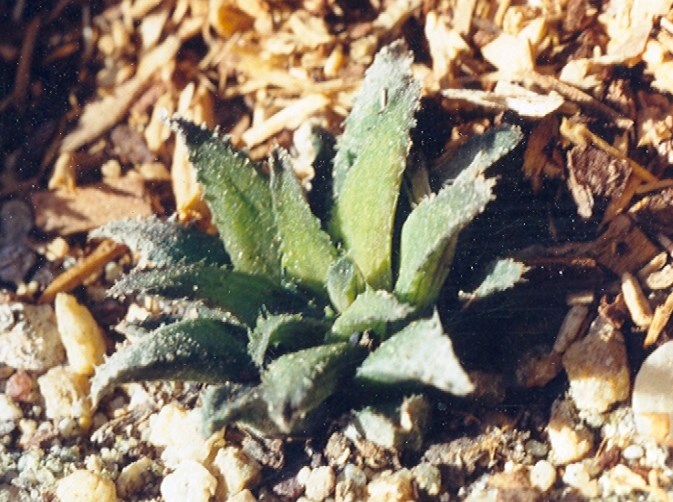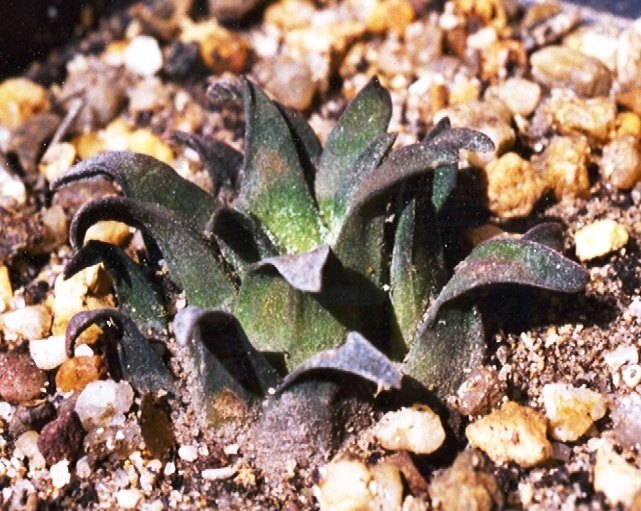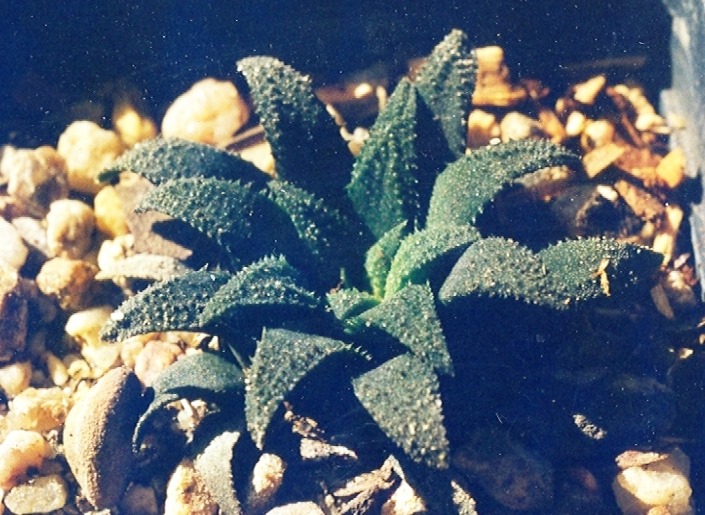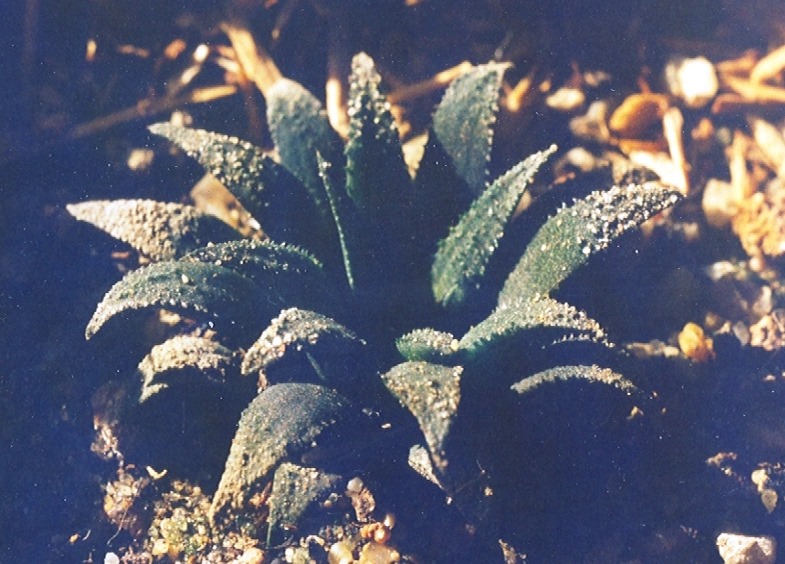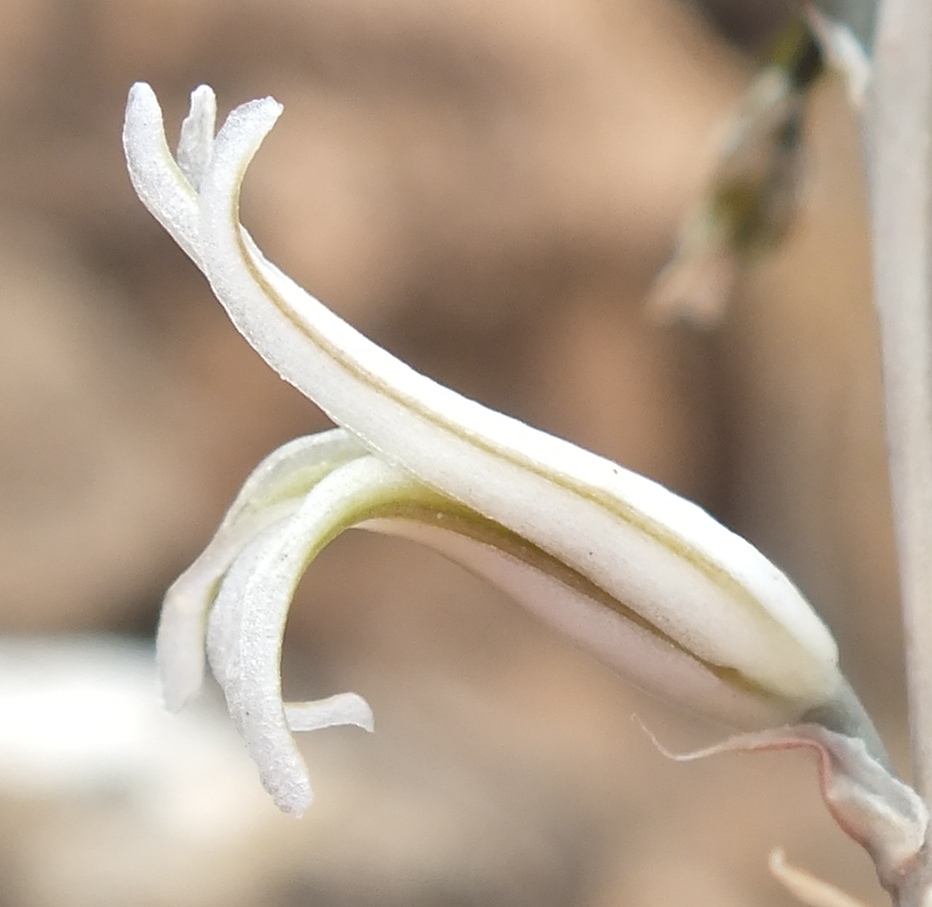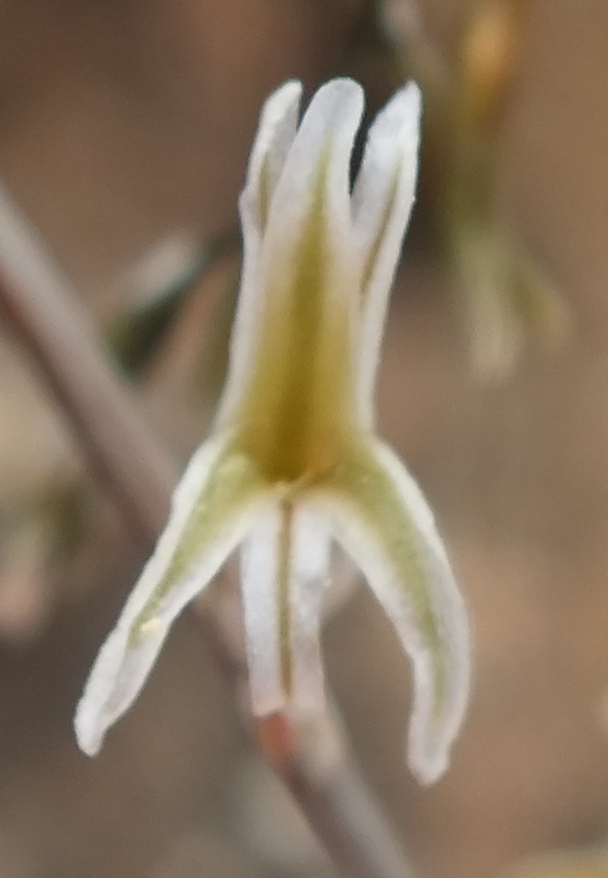112. 2020.03.26 – The trickster – H. floribunda. This is the Draaihoek Albertinia site where I was not sure (ca 1970) if it was floribunda or chloracantha. I went back to check ca 2001). The place was grazed and trampled to a frazzle – sheep and/or ostriches. I found a few specimens right at the far end. They pass for floribunda and especially if you recognise that floribunda has a good many faces. The last picture is from west looking east – so this is the top rocky edge of a south facing drop. The water is the Valse River. Dekenahii is across the way.
So in these very distressing times, lets see where we go next.
113. 2020.03.26 – This is H. chloracantha from east of Tweekuile along the Valse River north Albertinia, so also further east from Draaihoek. A small dense patch of plants under bush at the upper end of a south facing slope – escaping full exposure to sunlight. A few leaves show the round leaf tip of floribunda but the plants are also much more proliferous than I have ever seen in that ‘species’. It is very useful to consider all the variants in this complex to see how and why I arrive at my opinions on their classification. This is not a glamour complex but as systems they work in exactly the same way. I really regret not having good pictures and especially since I first saw this species at Great Brak in 1969.
114. 2020.03.27 – Ouvloere is east of the previous as that is from Tweekuile but the plants are really odd. Unlike the previous these plants are in and under low ground hugging plants at the top of a slope. This must be about 8km west of the Gouritz River.
How would you know this is H. floribunda?

The answer to … How would you know this is H. floribunda is because I say so? So please forgive my apparent arrogance. I would dearly love to show you all the plants and populations that lead to this conclusion because you would surely be able to then make that decision for yourself. These two pictures are also floribunda from very near to ‘splendens’ at Dekriet (Snymanskraal) west of Albertinia. A strange habitat where the rocky ferricrete is exposed but with a collapsed eroded depression in which the plants grow around the edges. When this time of tribulation is over, I hope to go back and get habitat pictures. Reminiscent of parksiana?.
115. 2020.03.30 – The Valse Rivier joins the Gourits at Die Eiland where there is now H. chloracantha and eastwards. It supplants floribunda entirely – or is it truly just the same species? As a serious aside – we may get a total 3-day Covid-19 lockdown of all internet and tele-communication in the next 7 days. Keep calm, keep safe.
116. 2020.03.30 – The last post was of plants from N Die Eiland (Buisplaas). From the top edge of a west facing shale cliff. These are also Buisplaas but from a low north facing slope of alluvium. I never imagined chloracantha could be so abundant and so resistant to the impact of habitat. But it becomes one of the most remarkable of the species on closer scrutiny.
The great awakening will be when one can truthfully and openly write about, discuss, the reality of basic life forms i.e. species. When we are free of the prejudices, beliefs and misconceptions of science as practiced and religions as preached. The great awakening will be when one can truthfully and openly write about, discuss, the reality of basic life forms i.e. species. When we are free of the prejudices, beliefs and misconceptions of science as practiced and religions as preached.













